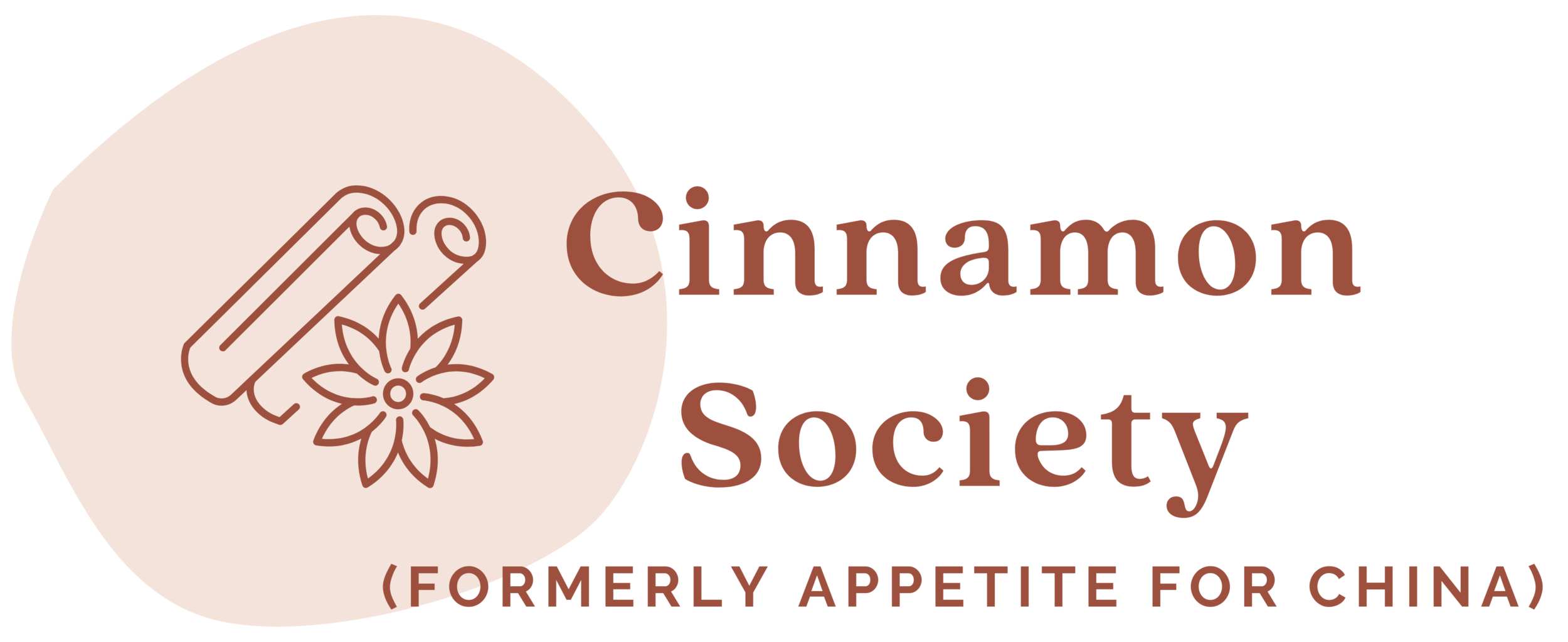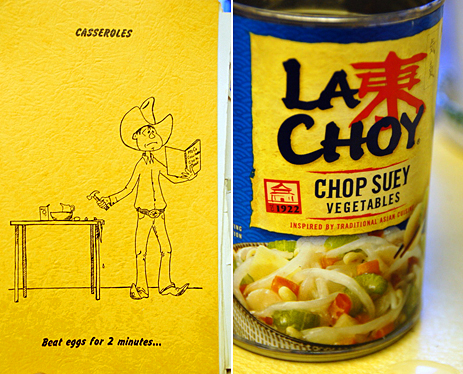Chop Suey Casserole, California Ranch Edition
Recently, while visiting Jacob's grandmother in California, I discovered a torn cookbook in her kitchen drawers. "Oh!" she exclaimed. "You found my bible!"
Titled "Country Cookin'", the book was published in the 1970s by the Monterey County Cowbelles, otherwise known as the wives of Monterey's ranchers. Surprisingly, only a tenth of the book is devoted to red-meat-centric dishes. Most of the recipes are charmingly anachronistic, like Dove in Wine Sauce and Hot Russian Tea (with Tang!). But what really caught my attention were the handful of Chinese recipes.
Zooming past the egg foo young and sweet and sour beef, I zeroed in on chop suey. After all, it was the page with the most food stains, the telltale sign of a beloved recipe.
Chop suey, the emblematic dish of the America's Chinese restaurants, is similar to the Cantonse "jap sui", literally "odds and ends". Which Chinese mother has not stir-fried every leftover bit in her kitchen with soy sauce? What developed in the US just had a thicker sauce, more standardized vegetables (onions and celery were a must), and fewer Mysterious Animal Parts. Later, some smart chef figured out that his customers loved anything crispy, and added fried noodles to the mix.
I did not grow up with American chop suey. By the late 1980s, it had dropped off most Chinese menus in the Northeast (though contemporaries like chow mein and pupu platters remained.) To my parents, La Choy products were as foreign as Twinkies. Until recently, I was not aware canned bean sprouts even existed.
"Why are you making chop suey?" Jacob asked a few days ago at Safeway. He looked tortured. He had, apparently, eaten the CowBelle chop suey too many times as a kid. "It's not going to taste good."
"Pessimist," I retorted.
My curiosity got the better of me. I've had chop suey once or twice in restaurants, and have stir-fried my fair share of random leftover vegetables. But I had never put myself in the role of a 70's-era housewife and made a fully-loaded chop suey casserole, with celery, onions, and Uncle Ben's. Honestly, I thought. There must be something appealing about chop suey that inspired Sinclair Lewis to give it a recurring role in his novels, Edward Hopper to name a painting after it, and millions of baby boomers to gobble it up.
Now, I had always assumed that the gooey-ness of chop suey was due to too much corn starch. And maybe it was, in Chinese restaurants. But for chop suey casseroles, the CowBelles and many other American cooks used the versatile Cream of Chicken soup. And why not? It sinks into the rice and results in a creamy, fragrant casserole. In lieu of the regular white grain, I used Uncle Ben's Original; the long baking time would have ruined instant rice.
The finished casserole tasted better than expected. My sausages lent enough flavor that I didn't have to season the dish, and the rice absorbed the liquid well without becoming mushy. Best of all, the hour-long baking seemed to eliminate the preservative aftertaste I associate with Campbell's soups.
As for The Pessimist, he took third helpings, leaving me with both an empty casserole dish and a self-satisfied grin.
Be warned, friends. If sauerkraut crosses my path soon, I will attempt Polish Chop Suey. Culinary experimentation is a dangerous thing.
________________________
American Chop Suey
Adapted from Country Cookin' by the Monterey County CowBelles, 1975 edition
Serves 4
- 2 medium onions, chopped
- 1 cup chopped celery
- 1/2 cup chopped green pepper
- 1 pound pork sausage, finely chopped, or ground beef
- 1 cup uncooked rice
- 1 can Cream of Chicken Soup
- 1/2 cup water
- 1/4 cup soy sauce
- 1 can bean sprouts*, or 1 cup fresh bean sprouts, chopped
- 1 can water chestnuts*, sliced
- Salt and pepper to taste
- 6 ounces chow mein noodles
*Given the difficulty of finding water chestnuts or bean sprouts in ranch country, I used La Choy Chop Suey Canned Vegetables, which also has bits of onion and celery.
- Preheat the oven to 350 degrees.
- Over medium-high heat, sauté the onions, celery, and green pepper until just cooked but not yet brown. Add the meat and cook for 3 to 4 minutes, until no longer red. Transfer to a casserole dish. Add the rice.
- In a separate bowl, mix together the Cream of Chicken, water, soy sauce, bean sprouts, and water chestnuts. Pour half the mixture into the bottom of the dish, layer the rice on top, and pour the rest of the mixture over the rice. Add the meat and onion mixture on the top.
- Bake for 1 hour.
- Sprinkle the chow mein noodles on top before serving.
_________________________________
Related posts:




